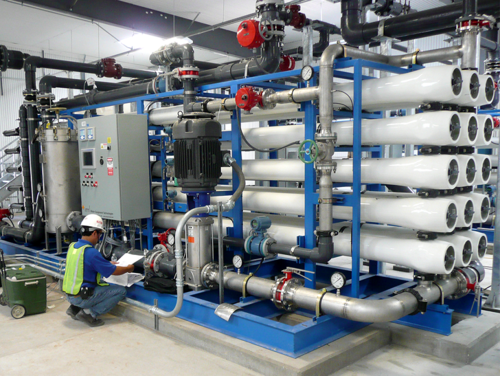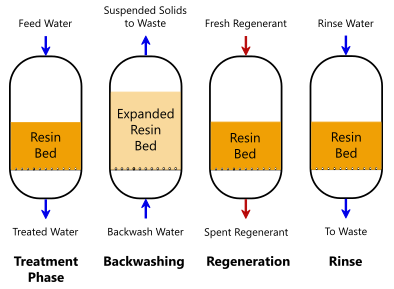Effective PFAS Waste Management in Agricultural Environments
Effective PFAS Waste Management in Agricultural Environments
Blog Article
Exactly How PFAS Treatment Makes Certain Clean and Sustainable Water
The visibility of PFAS, frequently known as "for life chemicals," presents significant obstacles to water high quality and public wellness. Advanced treatment technologies, consisting of activated carbon adsorption and membrane layer filtration, have actually emerged as reliable services to minimize these pollutants. By using these techniques, areas can not only attain cleaner water but likewise foster lasting practices that safeguard communities. The implications of these therapies extend beyond instant wellness advantages; they raise vital concerns concerning lasting water monitoring strategies that must be addressed to make certain a durable future. What does this mean for our approach to water sustainability?

Understanding PFAS Contamination
PFAS, or per- and polyfluoroalkyl materials, have actually become a substantial environmental problem because of their prevalent frequency and perseverance in the environment. These synthetic chemicals have been utilized in various industrial applications and consumer products, including non-stick kitchenware, water-proof apparel, and food product packaging, as a result of their one-of-a-kind residential or commercial properties such as water and grease resistance.
The contamination of soil and water sources by PFAS occurs mainly through industrial discharges, firefighting foam usage, and leaching from land fills. pfas management. Once launched, these materials are immune to destruction, bring about their build-up in the environment. This perseverance raises crucial problems, as PFAS can travel cross countries with groundwater and surface water systems, affecting drinking water products and ecological communities

Health And Wellness Dangers of PFAS
The perseverance of PFAS in the setting elevates considerable health and wellness worries for people subjected to these compounds. Referred to as "permanently chemicals," PFAS do not break down easily and can accumulate in human bodies with time. Study has actually connected PFAS direct exposure to different unfavorable health results, consisting of body immune system disorder, liver damage, and enhanced risk of particular cancers - pfas management. Significantly, research studies have shown raised cholesterol degrees and possible influence on reproductive and developing health and wellness, especially in pregnant individuals and babies.
The universality of PFAS in consumer items, such as non-stick cooking equipment, water-repellent materials, and food product packaging, additional enhances the threat of exposure. Consuming alcohol water contaminated with PFAS is a significant problem, as these chemicals can leach right into groundwater sources. At risk populations, including youngsters and those living near commercial sites, might face intense risks as a result of their developing systems and possible for higher direct exposure levels.
As understanding of these wellness risks remains to grow, regulative companies are starting to develop guidelines for PFAS degrees in alcohol consumption water. Public health efforts are important to mitigate exposure and shield communities from the long-lasting results of these hazardous materials.

Ingenious Therapy Technologies
How can we successfully tackle the obstacles posed by PFAS contamination in water resources? Innovative therapy technologies are arising as essential options in the quest for tidy water. These methods concentrate on the elimination or destruction of per- and polyfluoroalkyl materials (PFAS), which are notorious for their determination in the setting.
One appealing strategy is adsorption using sophisticated materials, such as triggered carbon and ion exchange materials. These materials have shown effectiveness in recording PFAS particles from water. Another notable modern technology is membrane filtering, which makes use of nanofiltration and turn around osmosis to separate pollutants at the molecular degree, hence providing a barrier versus PFAS.
In addition, progressed oxidation processes (AOPs) employ strong oxidants to damage down PFAS substances right into harmless by-products. This technique is specifically effective for treating extremely polluted water resources. Bioremediation strategies, employing specific bacteria, are likewise being discovered to weaken PFAS.
As research continues, hybrid systems that reference integrate multiple modern technologies might offer improved efficiency, dealing with the complexities of PFAS contamination. The growth and application of these innovative treatment innovations are necessary actions toward guaranteeing the security and sustainability of our water resources.
Benefits of Reliable PFAS Therapy
Efficiently treating PFAS contamination in water resources substantially enhances public health and ecological security. PFAS, often described as "permanently chemicals," are resistant to destruction and can build up in the body, causing major wellness dangers such as cancer cells, liver damage, and immune system disorder. By implementing reliable treatment approaches, neighborhoods can reduce exposure to these harmful materials, additional hints eventually boosting the health and wellness results of their populations.
Additionally, successful PFAS therapy adds to the conservation of local ecological communities. Contaminated water can negatively affect water life and interfere with the delicate equilibrium of neighborhood habitats. By ensuring tidy water, treatment procedures protect biodiversity and preserve eco-friendly integrity.
Furthermore, effective PFAS remediation can promote public self-confidence in water quality. When neighborhoods are ensured that their drinking water is devoid of harmful pollutants, it advertises a feeling of safety and wellness. This trust is necessary for community involvement and support for continuous water monitoring initiatives.
Future of Water Sustainability
In the middle of expanding problems about water quality and shortage, the future of water sustainability rests on cutting-edge methods and collective efforts. As areas face the looming dangers of impurities like PFAS, the development of sophisticated therapy modern technologies is vital. These modern technologies not just focus on the removal of unsafe substances however additionally advertise the reuse and recycling of water, thereby lowering general need.
In addition, reliable water administration plays an important duty in ensuring sustainable methods. Policymakers must integrate scientific research with regulative frameworks to develop clear standards for water use and therapy. Stakeholder engagement, including neighborhood communities and industries, cultivates a feeling of shared duty and urges sustainable techniques throughout numerous sectors.
Investment in facilities is likewise critical; upgrading aging systems to integrate modern filtering and purification methods can significantly enhance water top quality. Embracing environment-friendly modern technologies, such as all-natural filtration systems, can give more helpful hints green remedies.
Ultimately, the future of water sustainability lies in a holistic technique that combines innovation, plan, and neighborhood involvement. By focusing on these elements, we can secure our water resources for generations to come, ensuring tidy and sustainable water for all.
Verdict
In conclusion, the effective treatment of PFAS is crucial for guaranteeing clean and sustainable water. Ultimately, robust PFAS treatment methods add to long-term resilience in water management, promoting public depend on in water high quality and advertising lasting methods.
Report this page